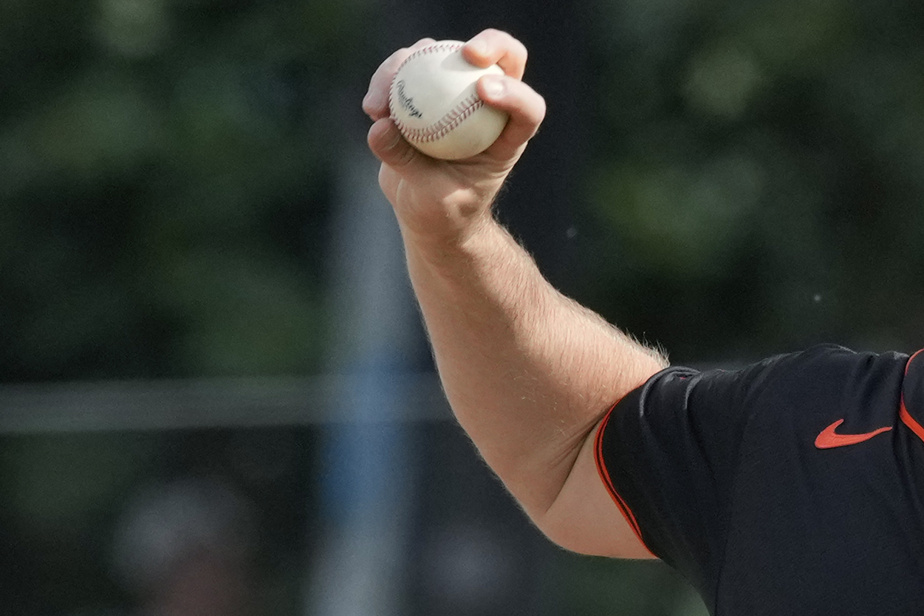(Glendale) There is a link between Tommy John and the Dr Frank Jobe, in 1974, and players Shohei Ohtani, Justin Verlander and Bryce Harper. A strong trend among major baseball star players. Especially on the mound, but also at the plate.
A surgical intervention that revolutionized everything.
Nearly 50 years ago, on September 25, 1974, Jobe repaired a torn ulnar collateral ligament in John’s left arm. It was a historic feat, but also a lifeline for John, who played 14 more seasons in the Major Leagues rather than having to bow out — and the name still resonates in medicine today. athletic, well beyond his playing career.
Tommy John surgery.
“I wouldn’t be here right now if it wasn’t for this surgery,” admitted Chicago White Sox pitcher Michael Kopech. It doubled the length of my career. »
Tommy John surgery, along with arthroscopic surgery and anterior cruciate ligament reconstruction, is among the greatest advances in sports medicine of the last 50 years, according to Dr.r Tim Kremchek, a veteran therapist for the Cincinnati Reds.
“It just extended and preserved a lot of careers,” he said. Not just in baseball, but also in other sports where we help many athletes, especially those who need to raise their arms above their head. But on a baseball level, I think it allowed us to see some of the greatest athletes in history continue their careers for many years. »
The idea for the Tommy John procedure came from Jobe’s work at Rancho Los Amigos, a hospital in southern California, where doctors transferred tendons to help polio patients.
Jobe simply applied the same concept to John’s elbow. He removed the palmaris longus tendon from John’s right arm, drilled four holes in his left elbow, then used that tendon to replace the torn one.

PHOTO PIERRE CÔTÉ, LA PRESSE ARCHIVES
Tommy John, in 1973
“It wasn’t a revolutionary idea,” Jobe said in July 2013, about seven months before his death. It was uniquely revolutionary for the elbow. »
Today, the Tommy John surgical procedure remains essentially the same as that performed by Jobe in 1974. However, doctors have made great advances in preserving the ulnar nerve, as well as limiting the development of scar tissue, in order to place the ligament in the right place and to ensure that it has the right tension.
The evolution of the intervention — as well as the progress made in the physical condition of the players — is visible in the results recorded on the field.
Verlander won the American League Cy Young Award in 2022, two years after undergoing Tommy John surgery. Kopech went under the knife in 2018, and his fastball averaged 95.2 mph last season. Los Angeles Dodgers gunner Tyler Glasnow underwent the procedure in 2021, and he struck out a career-high 162 batters in 120 innings pitched last season. Harper, who also underwent Tommy John surgery in November 2022, returned to the Philadelphia Phillies lineup last May.
Then, of course, there’s Ohtani, who signed a record $700 million contract with the Dodgers months after undergoing a second major elbow surgery.
“If you calculate the financial cost, then I believe Tommy John surgery is the most cost-effective reconstructive surgery in history,” said Dr.r Neal ElAttrache, the head therapist for the NFL’s Dodgers and Los Angeles Rams.

PHOTO LINDSEY WASSON, ASSOCIATED PRESS
Shohei Ohtani
This intervention has become a source of pride for Jobe over time.
ElAttrache recalled a dinner hosted by the Baseball Hall of Fame that he attended with his wife to recognize Jobe’s historic contribution. He sat at a table with Jobe, John and legendary pitcher Sandy Koufax — whose career ended abruptly at age 30 due to chronic elbow pain.
“Frank said, ‘Sandy, my only regret is that I wish I had been more aware and thought about this procedure earlier in my career. You could have continued your career for many seasons,” ElAttrache said.
